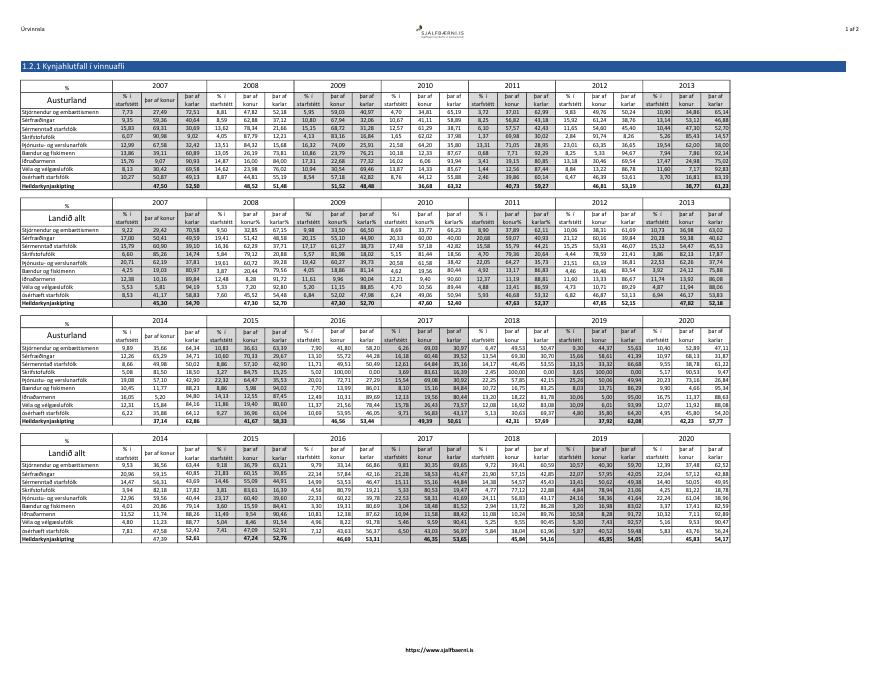Progress
Figure 1. The ratio of women and men in different occupational groups in the eastern region of Iceland is compared to the gender balance in the same occupational groups nationwide.
View table with the results from 2007-2023
Updated: September 3, 2024
Source: Statistics Iceland 2024
Metrics, Targets and Monitoring Protocol
What is measured?
Gender balance in different occupations in East region of Iceland compared to national average (Project effect: direct). Grouping is based on ÍSTARF95, an Icelandic version of ISCO-88, International Standard Classification of Occupations. :
- Managers (ÍSTARF 12 - 13)
- Professionals (ÍSTARF 2)
- Engineers (ÍSTARF 2142 - 2147)
- Technicians and Associate professionals (ÍSTARF 3)
- Clerks (ÍSTARF 4)
- Service and sales workers (ÍSTARF 5)
- Skilled agricultural and fishery workers (ÍSTARF 6)
- Crafts and related trades workers (ÍSTARF 7)
- Plant and machine workers (ÍSTARF 8)
- Elementary occupations (ÍSTARF 9)
Changes of indicator
This indicator was not in fact part of the initial monitoring, but information was obtained in connection with the indicator 2.1. It was then named Gender Balance in Alcoa and Landsvirkjun Workforce and can be found under that number in documents of the project from 2005 and 2006.
The indicator number has been changed twice.
| Year | Nr. | Indicator name |
|---|---|---|
| 2020 | 1.2.1 | Gender balance |
| 2007 | 1.1 | Gender Balance in the Workforce |
Baseline
Rationale for Indicator Selection
This indicator aims for a gender-balanced workforce. The Central East Region has suffered from out-migration of younger members of the community who are drawn to the ‘pull' of educational and employment opportunities offered by the Capital Region. Additionally, young workers, particularly females, are influenced by the ‘push' of low paying jobs in traditionally male-dominated sectors such as agriculture, fishing, and fish processing. Such an imbalance in gender is not indicative of a stable community. The establishment of the Kárahnjúkar and Fjarðaál projects may assist in reducing the ‘push' from the Central East region and is likely to attract individuals to the area for its work opportunities.
From phase I/II report on indicators and baseline from April 2005
Further reading

ÍSTARF95 Icelandic job classification with explanations and examples (Icelandic)
